Sir Alister Hardy invented the CPR (continuous plankton recorder) in 1931, a device that is towed behind commercial vessels as they voyage around the oceans. The recorder filters and traps plankton onto a layer of silk before slowly being wound onto a roll. The laden silk roll is later analyzed by plankton specialists who record the variety and species of plankton, this process provides unparalleled information on the health and long term changes of our oceans and the marine environment.
The first tow took place in the North Sea on September 15th, 1931. This robust sampling instrument little changed for 90 years is towed by ‘ships of opportunity’ on a monthly basis.
CPR a Guinness World Record!
Since 1931, the CPR Survey has operated in every ocean, and in 2021, was awarded a Guinness World Record for having sampled the greatest distance by a marine survey, after covering more than 7 million nautical miles!
The Commemorative plankton etching.
In the past I have spent many hours in the laboratory at Citadel Hill drawing plankton. I have also run some plankton print making classes, so I was delighted to be asked to produce a limited edition etching of 50 prints to commemorate the 90th anniversary. These prints are to be given to each ship of opportunity.
Many of the ideas and subjects for my work come from memories, books, places I have visited and people that I have met. As a small child I remember visiting Sir Frederick (a previous director of the MBA) and Lady Russell at their home Wardour House on Tavistock Road, Plymouth for afternoon tea with my mother. I never dreamed that one day I would study and draw plankton – this made the commission particularly special.
The plankton etching process from start to finish!
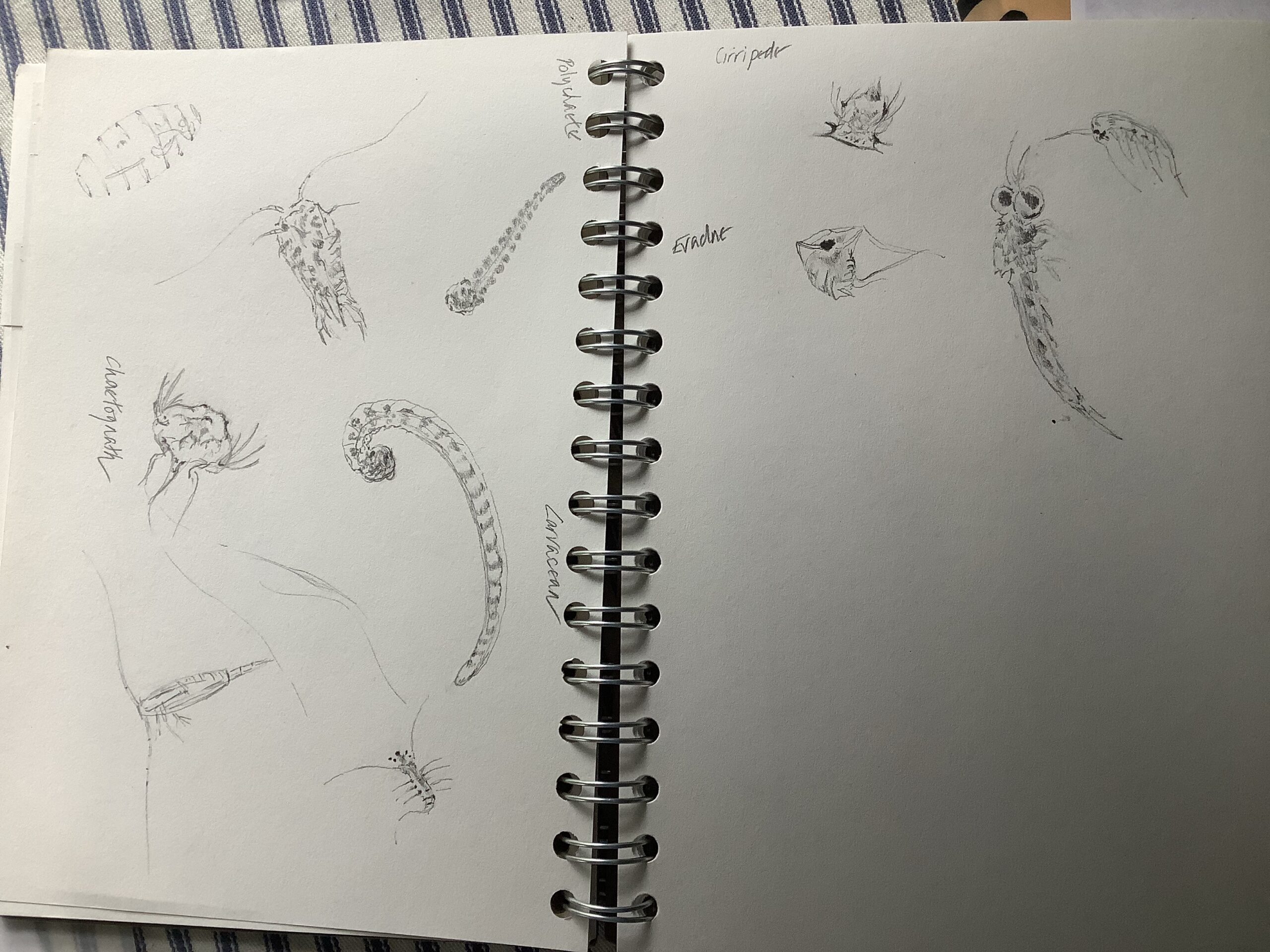
Starting the plankton etching process
After the initial ideas, sketches and drawings I need to prepare a copper sheet, which will become the finished printing plate from which the limited edition paper etchings are pulled using my converted Victorian mangle. The etching process involves many time consuming but enjoyable steps, all part of the process required to create the final print.
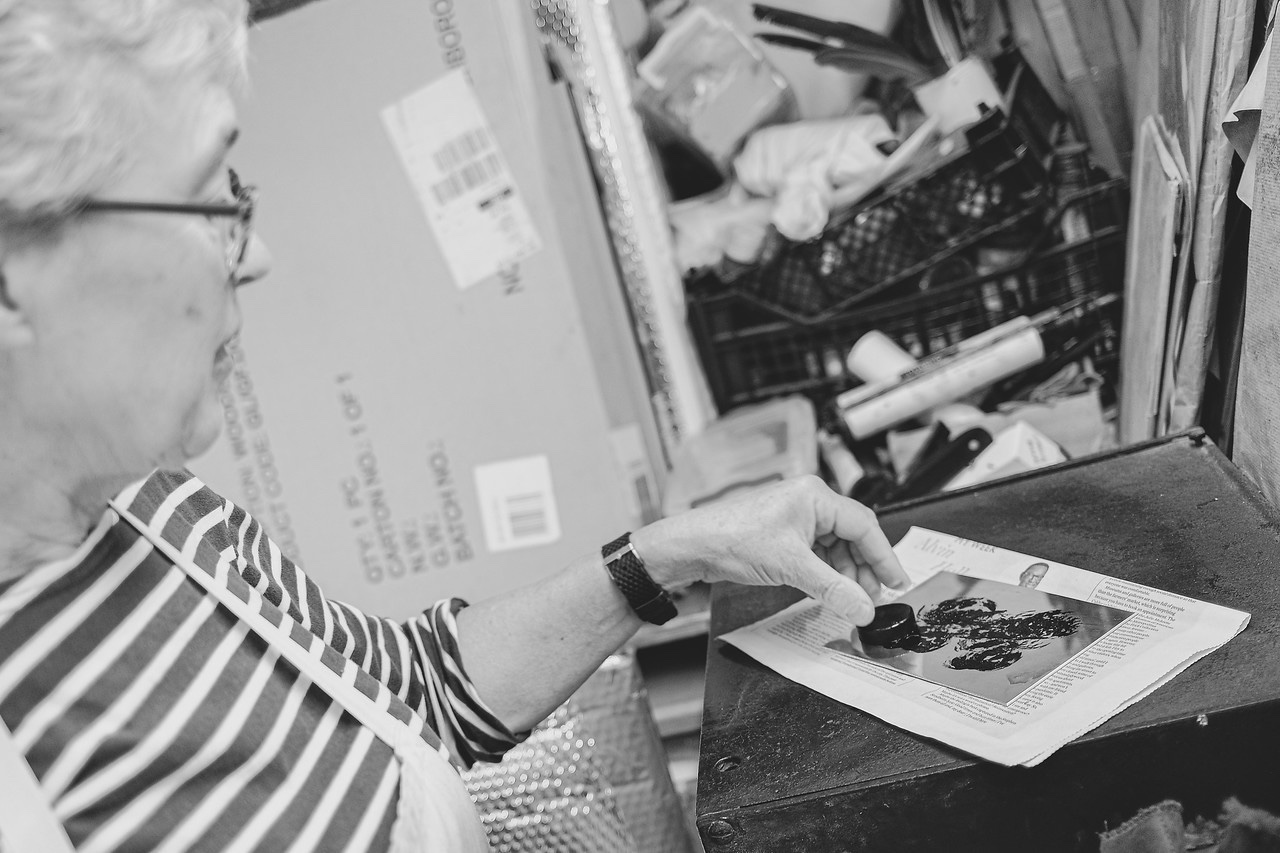
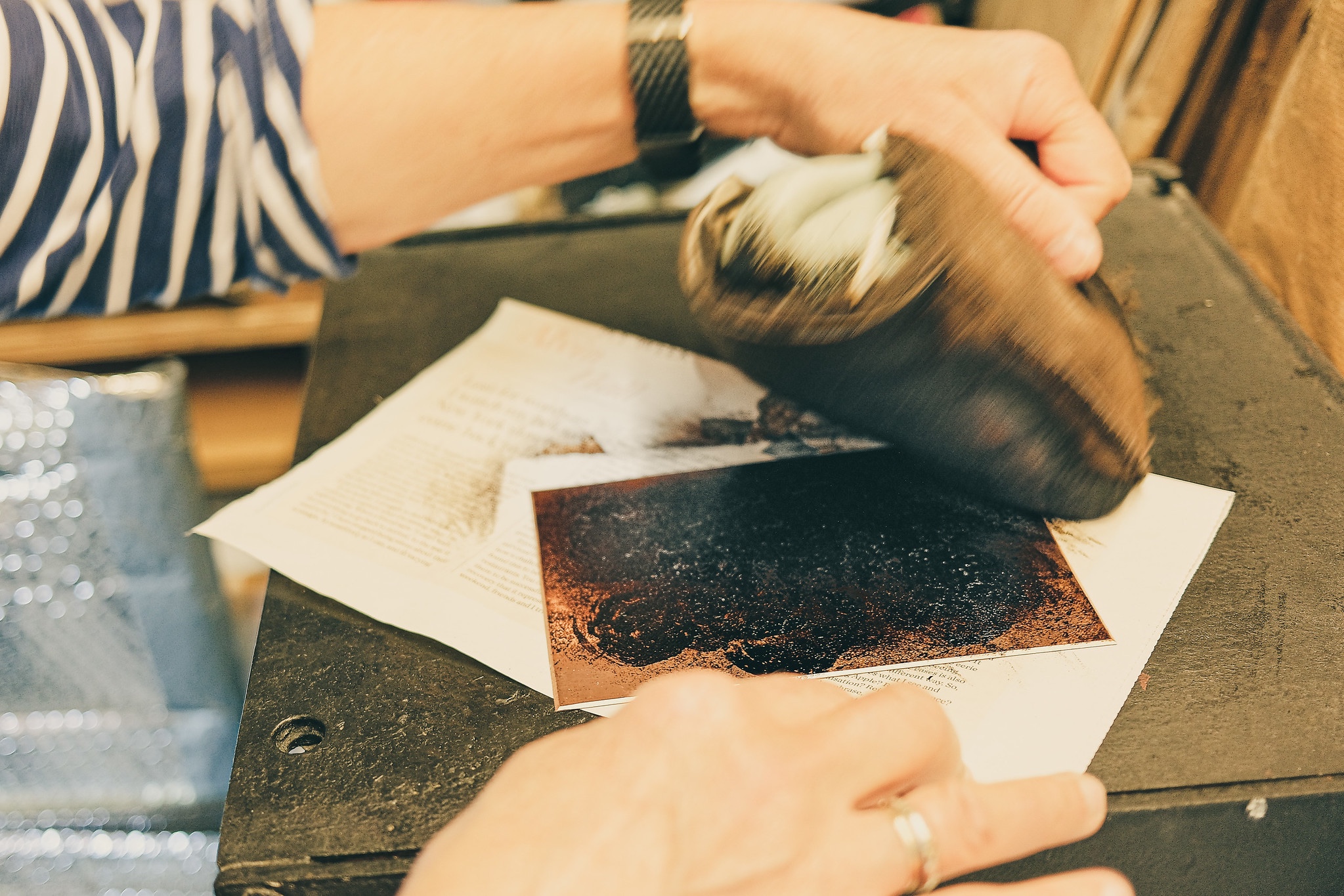

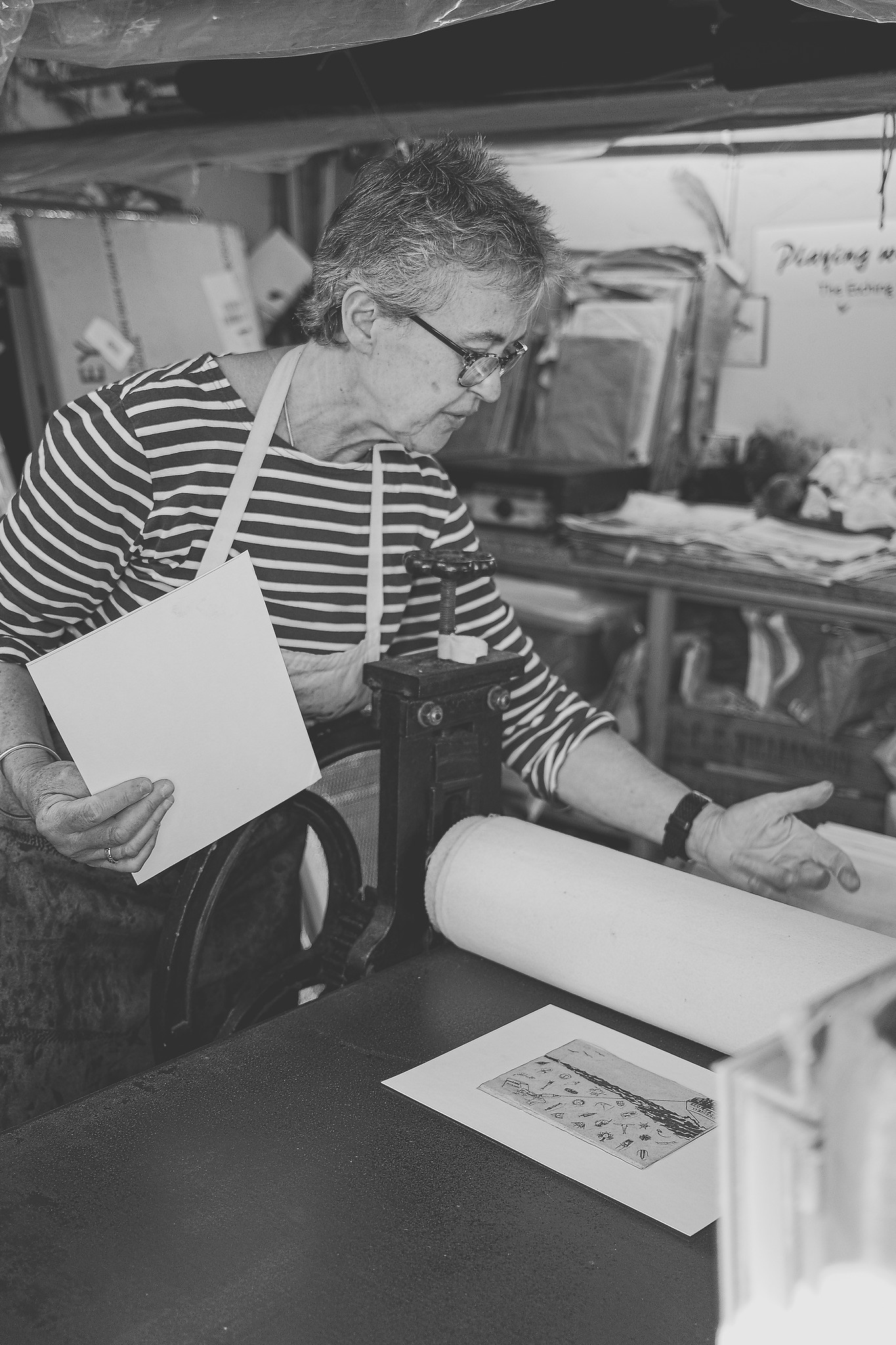
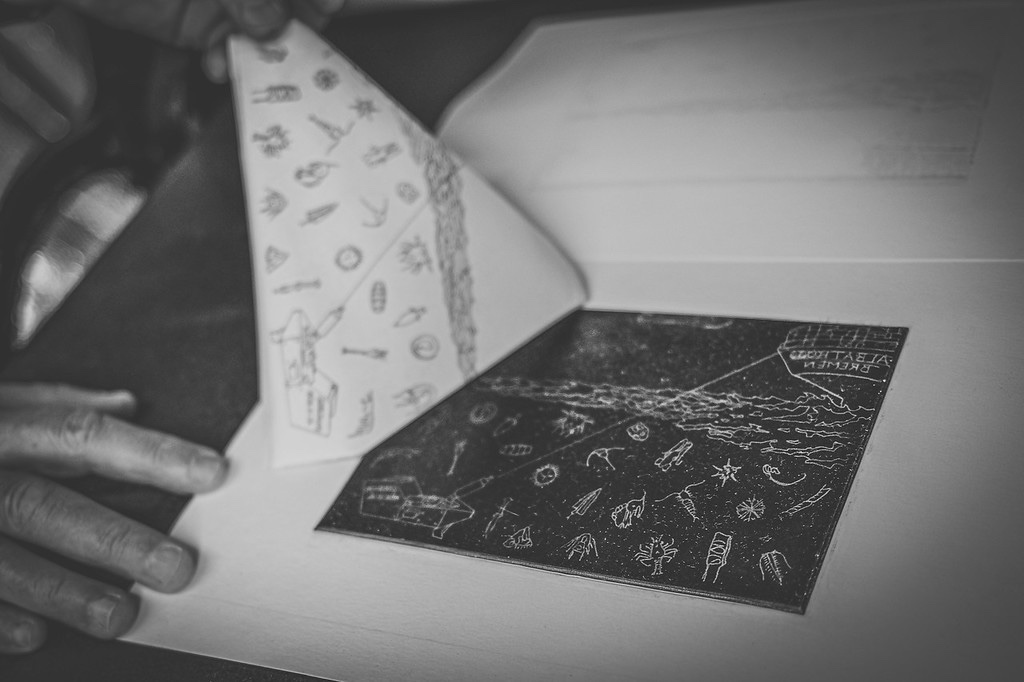
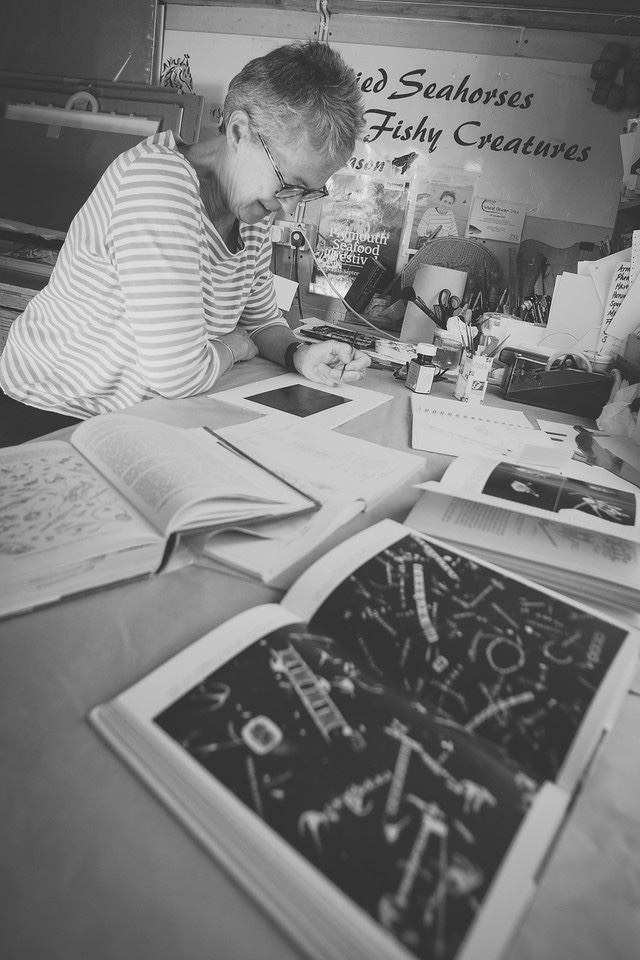
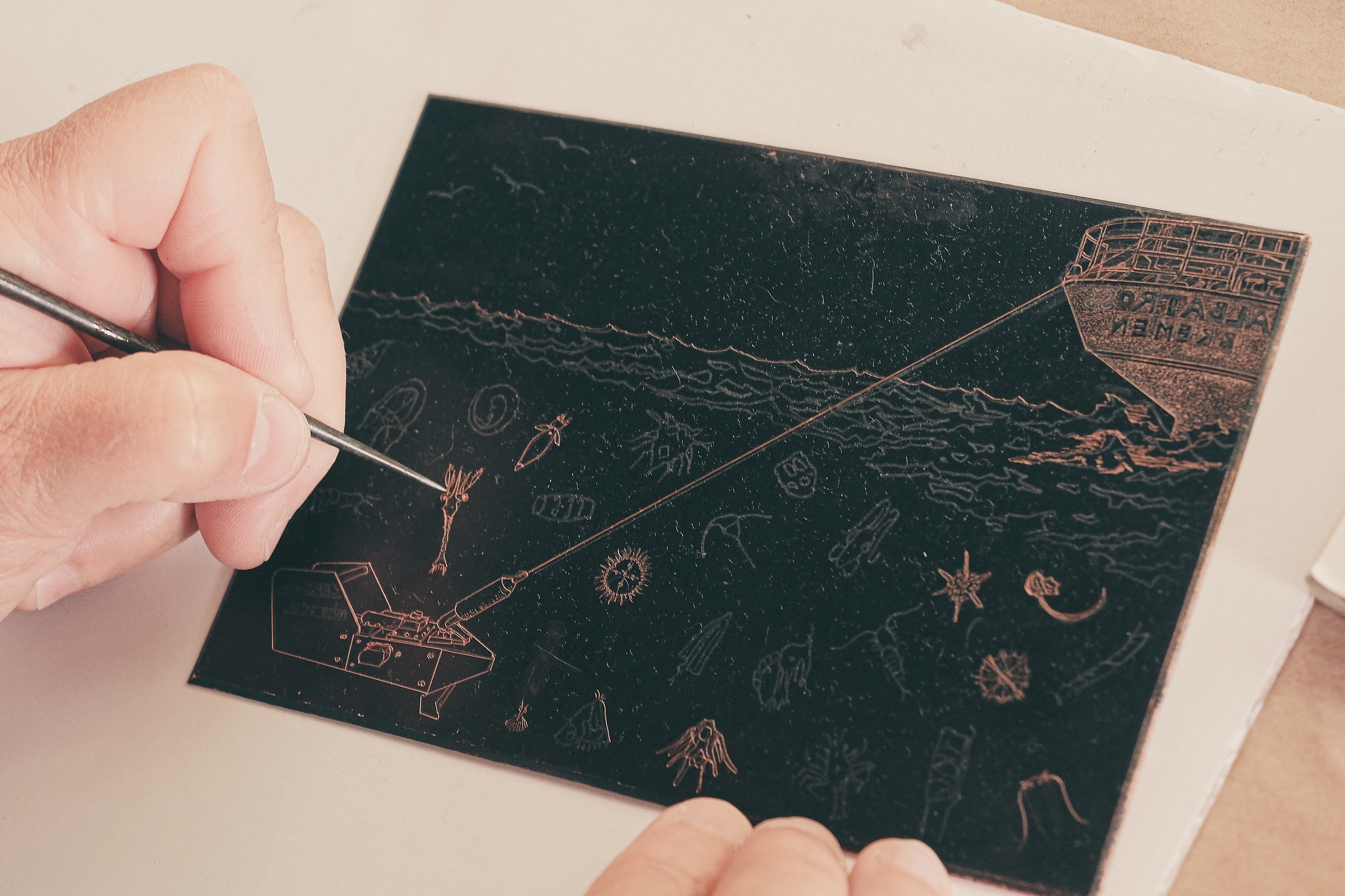
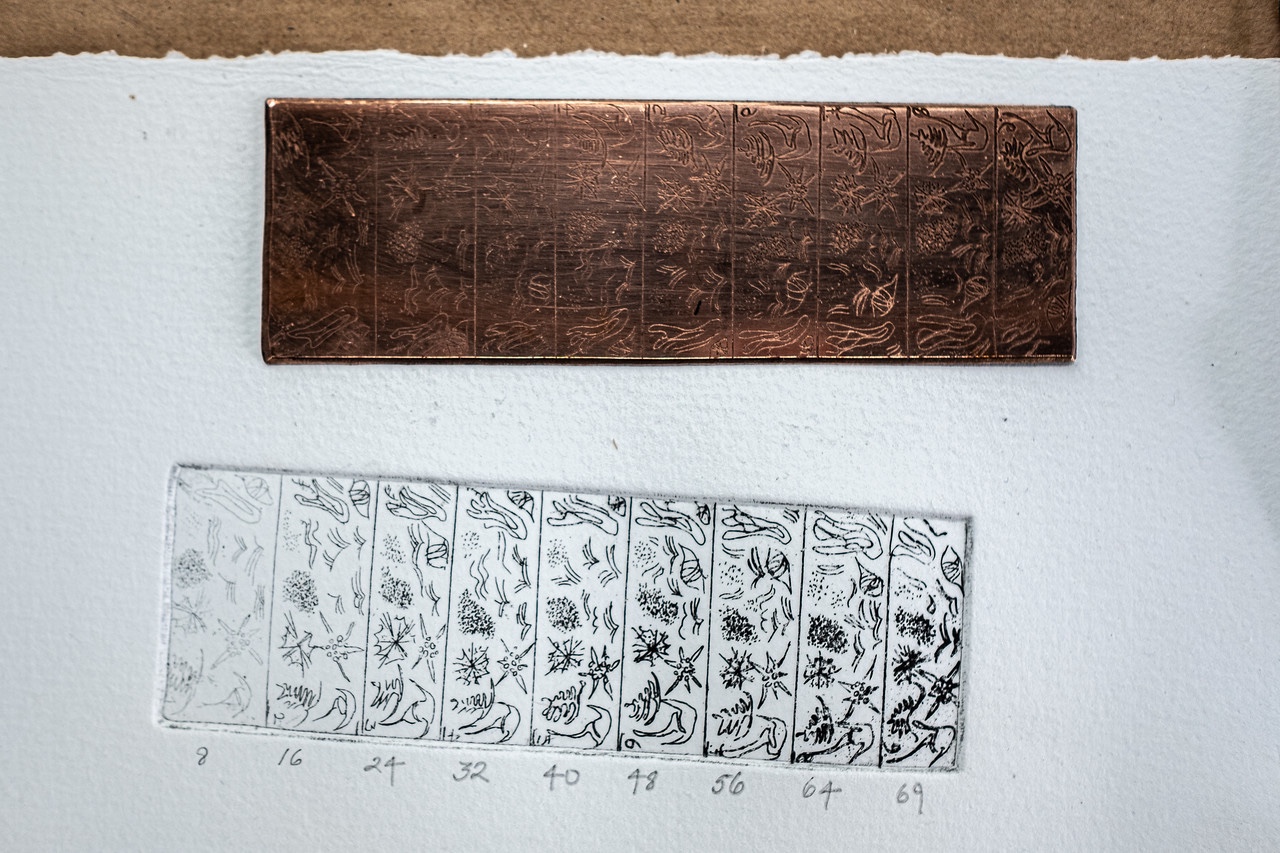
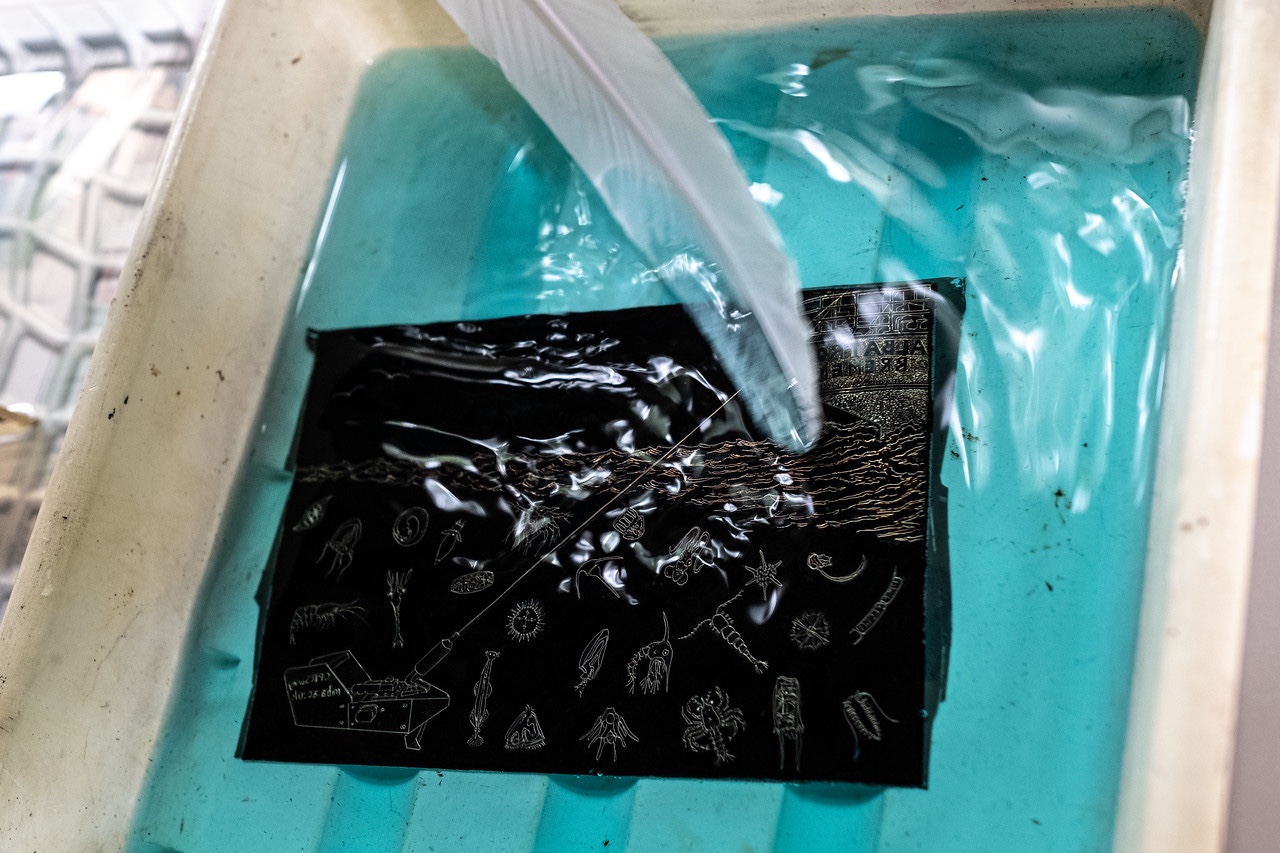
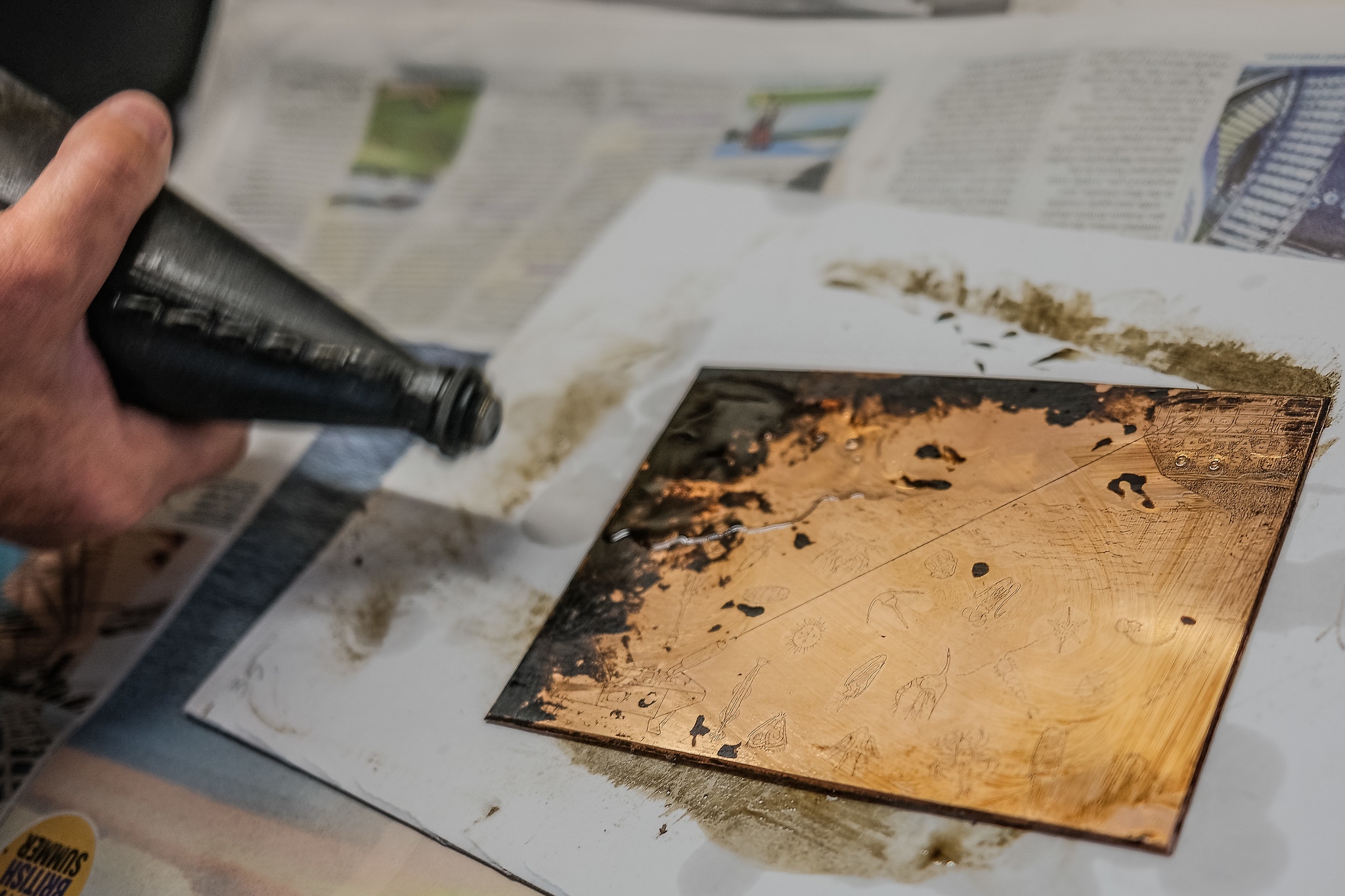
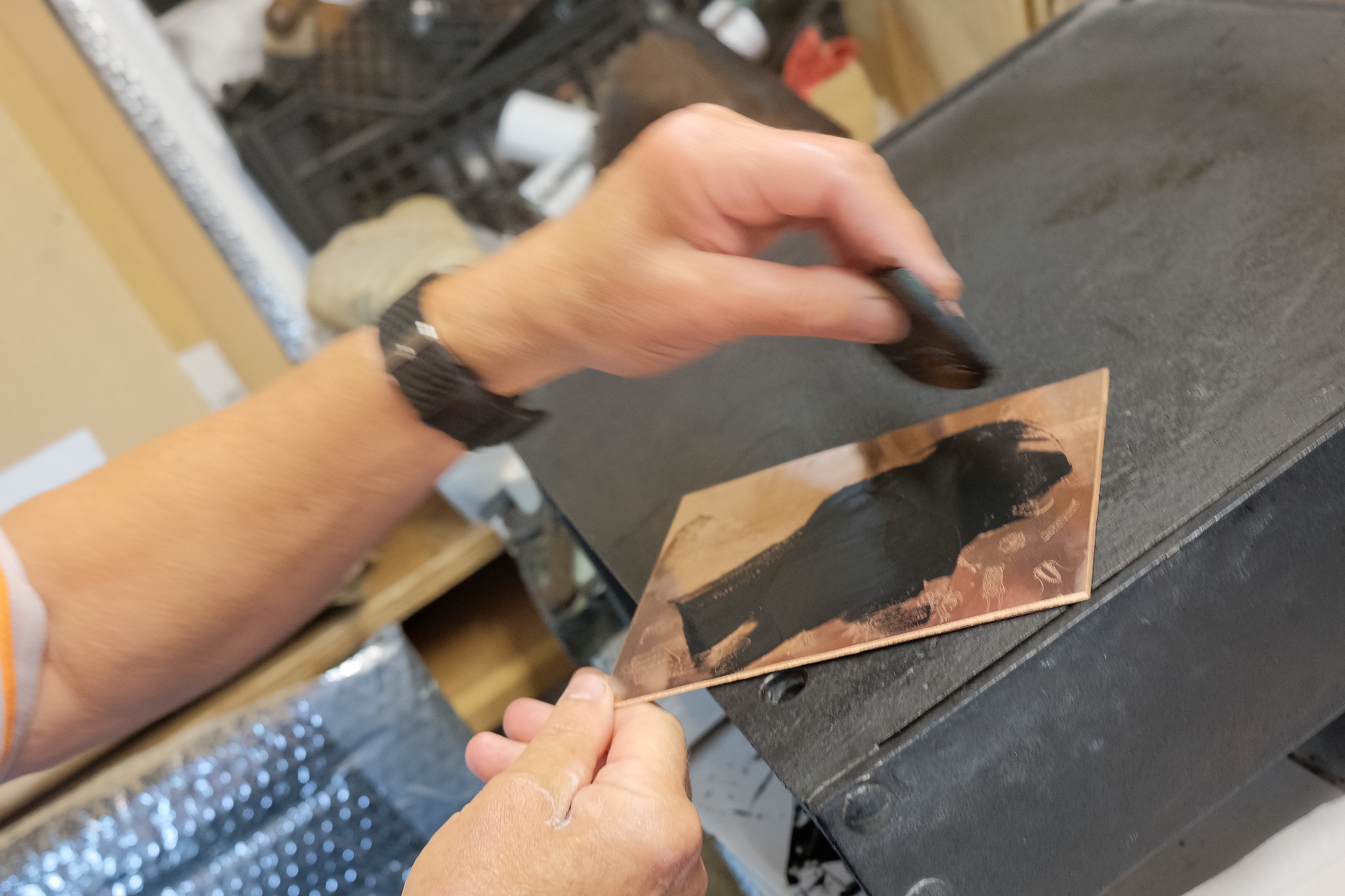
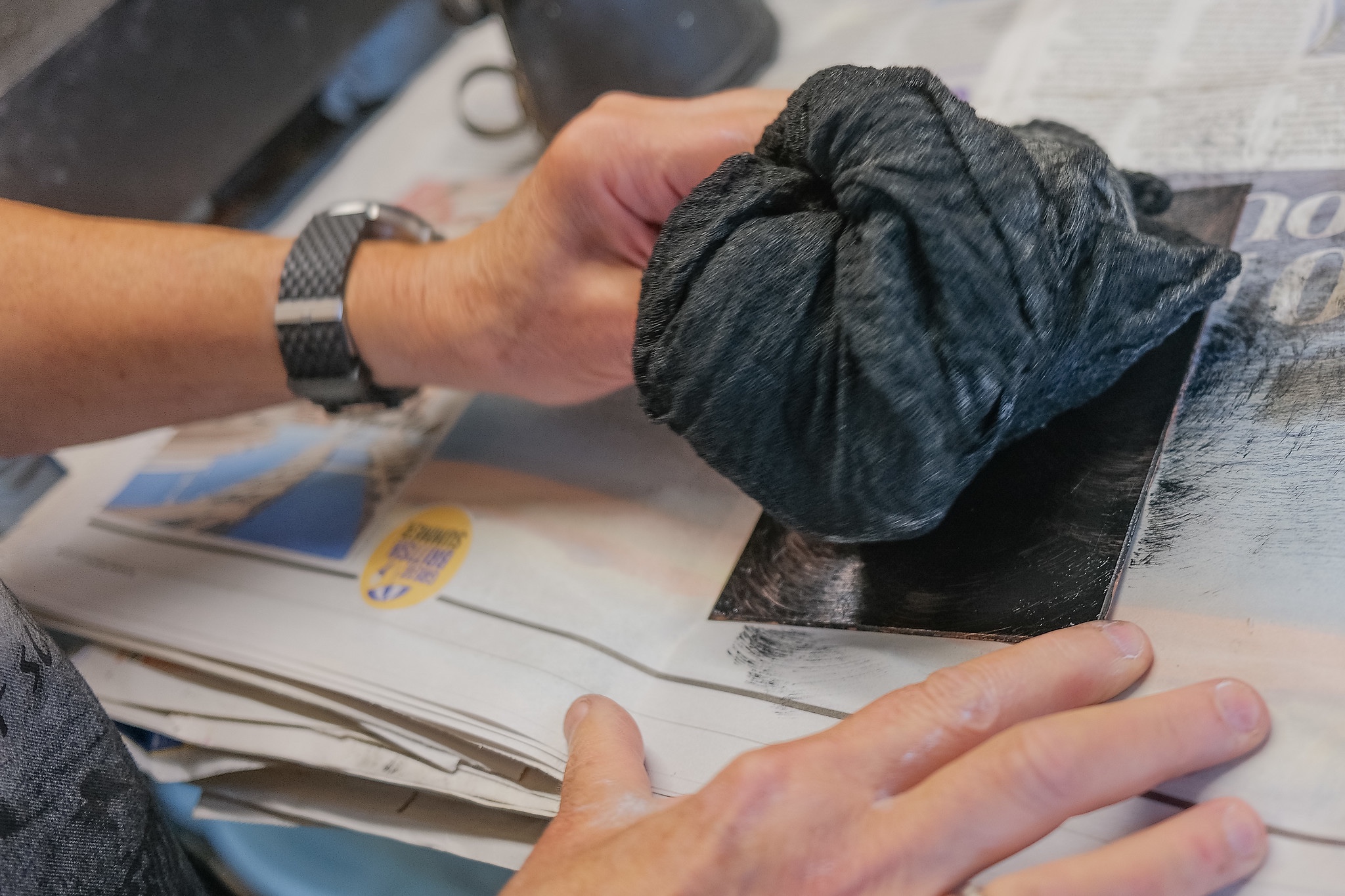
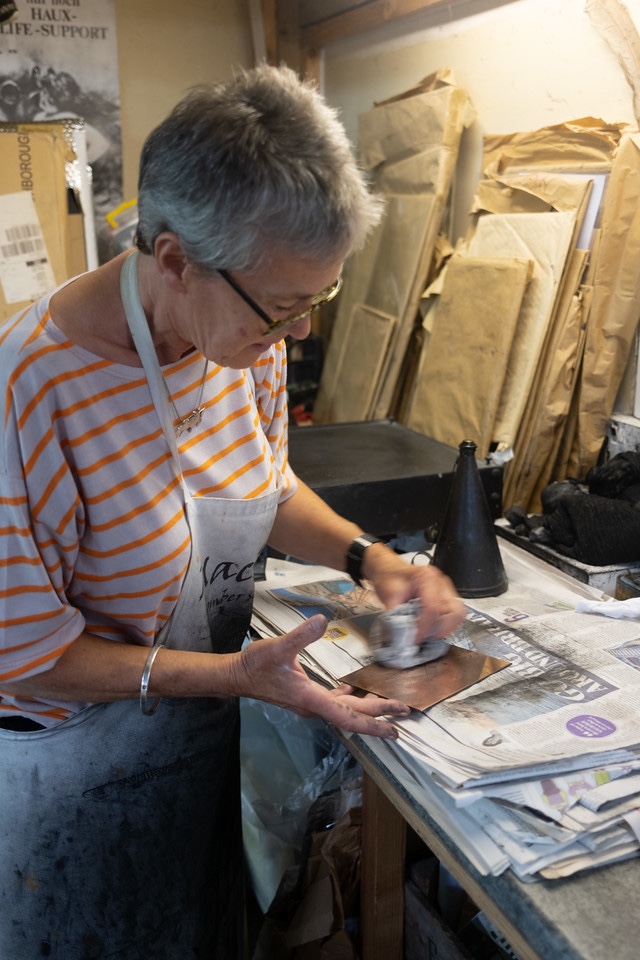
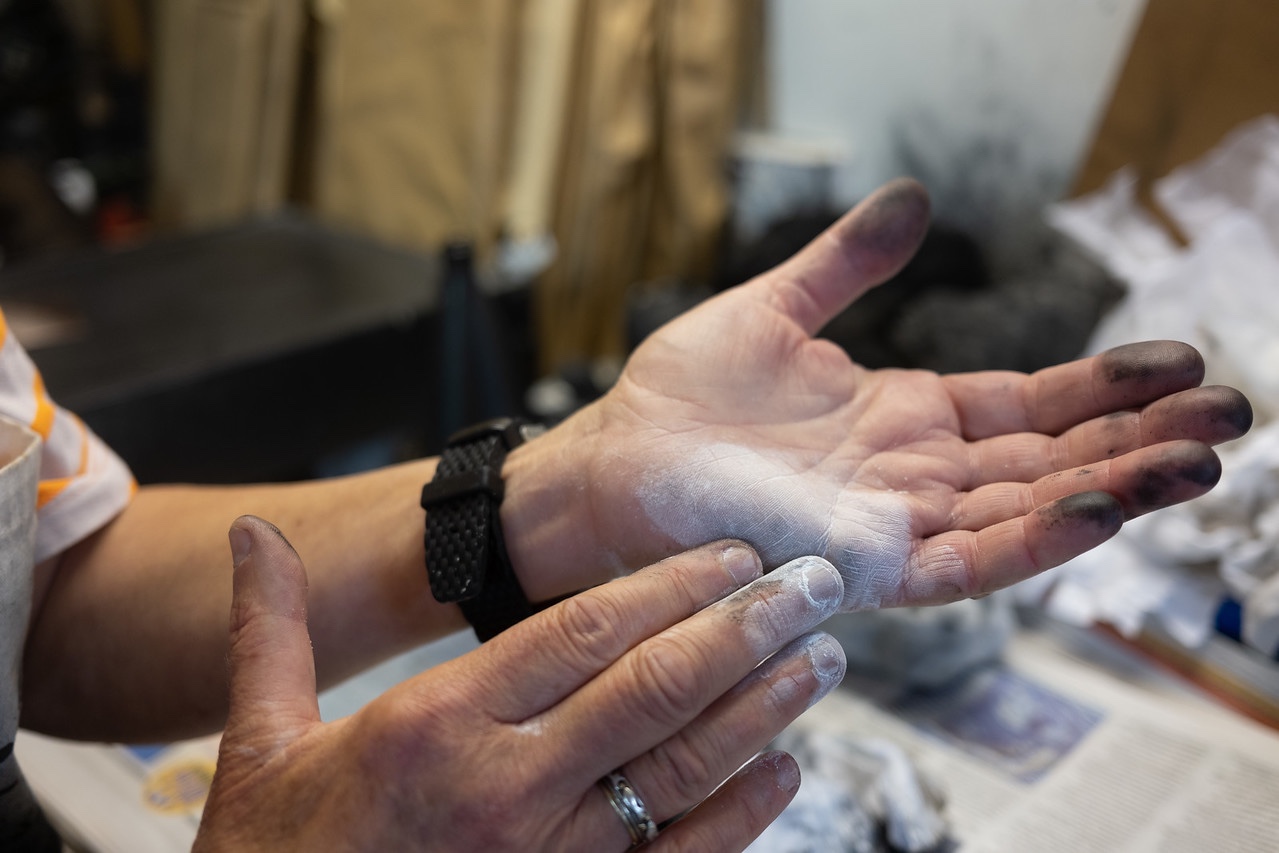
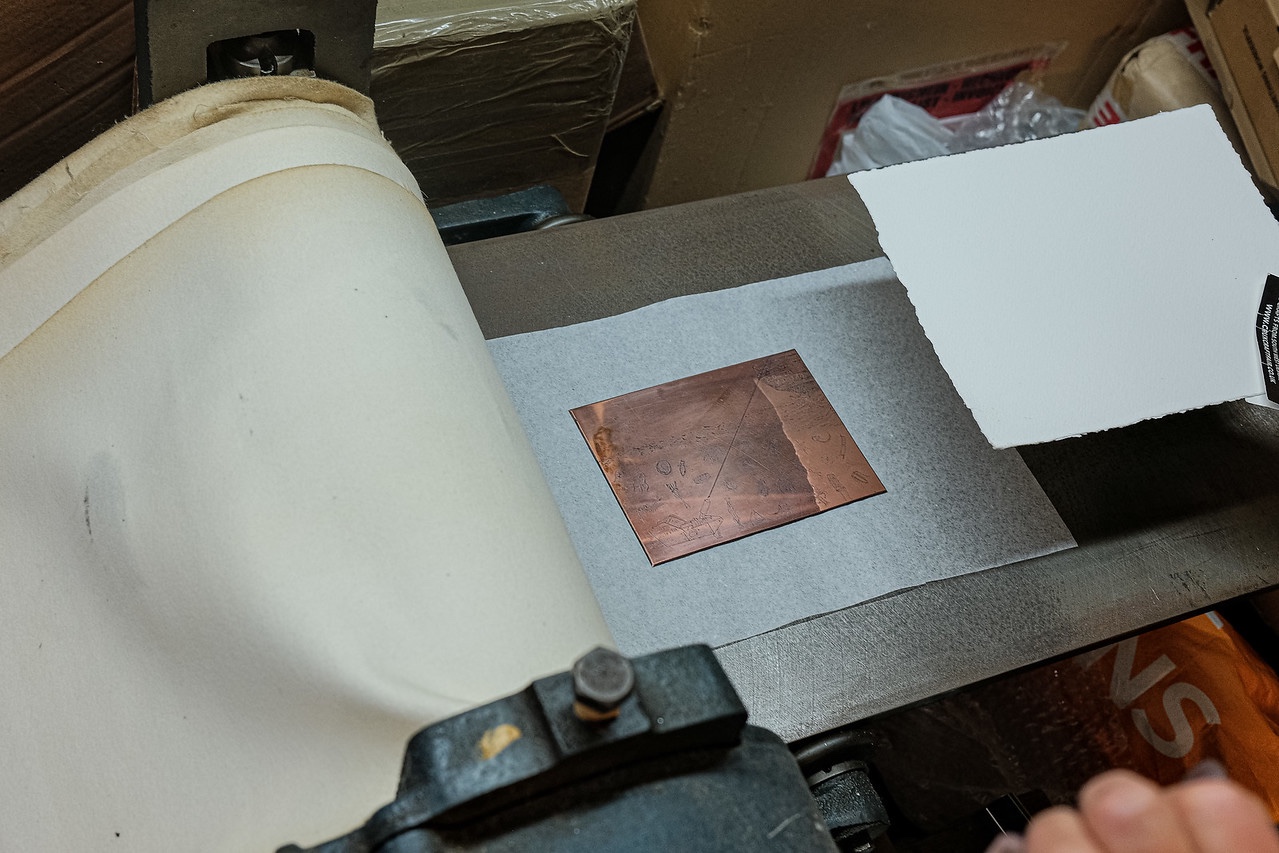
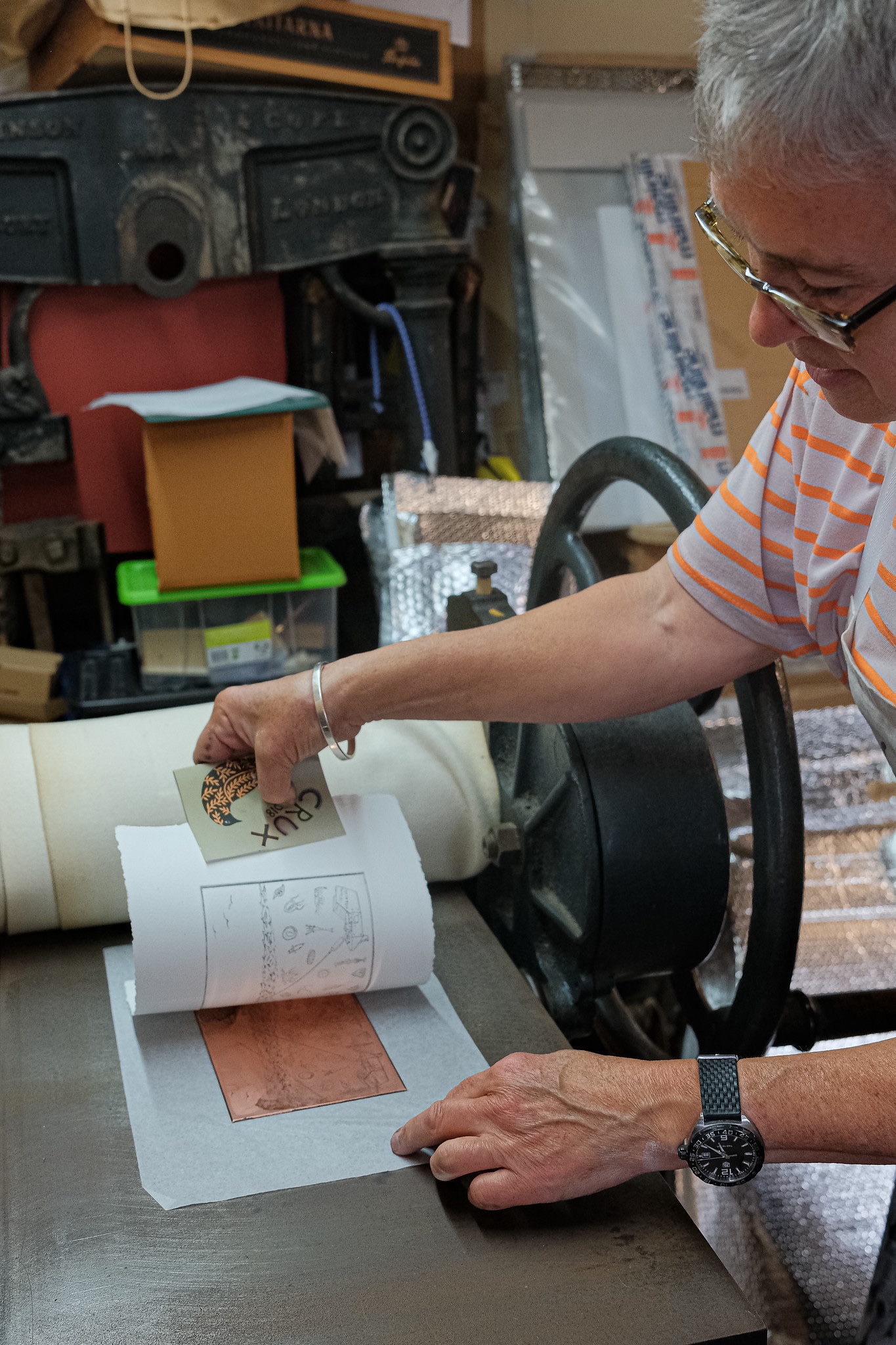
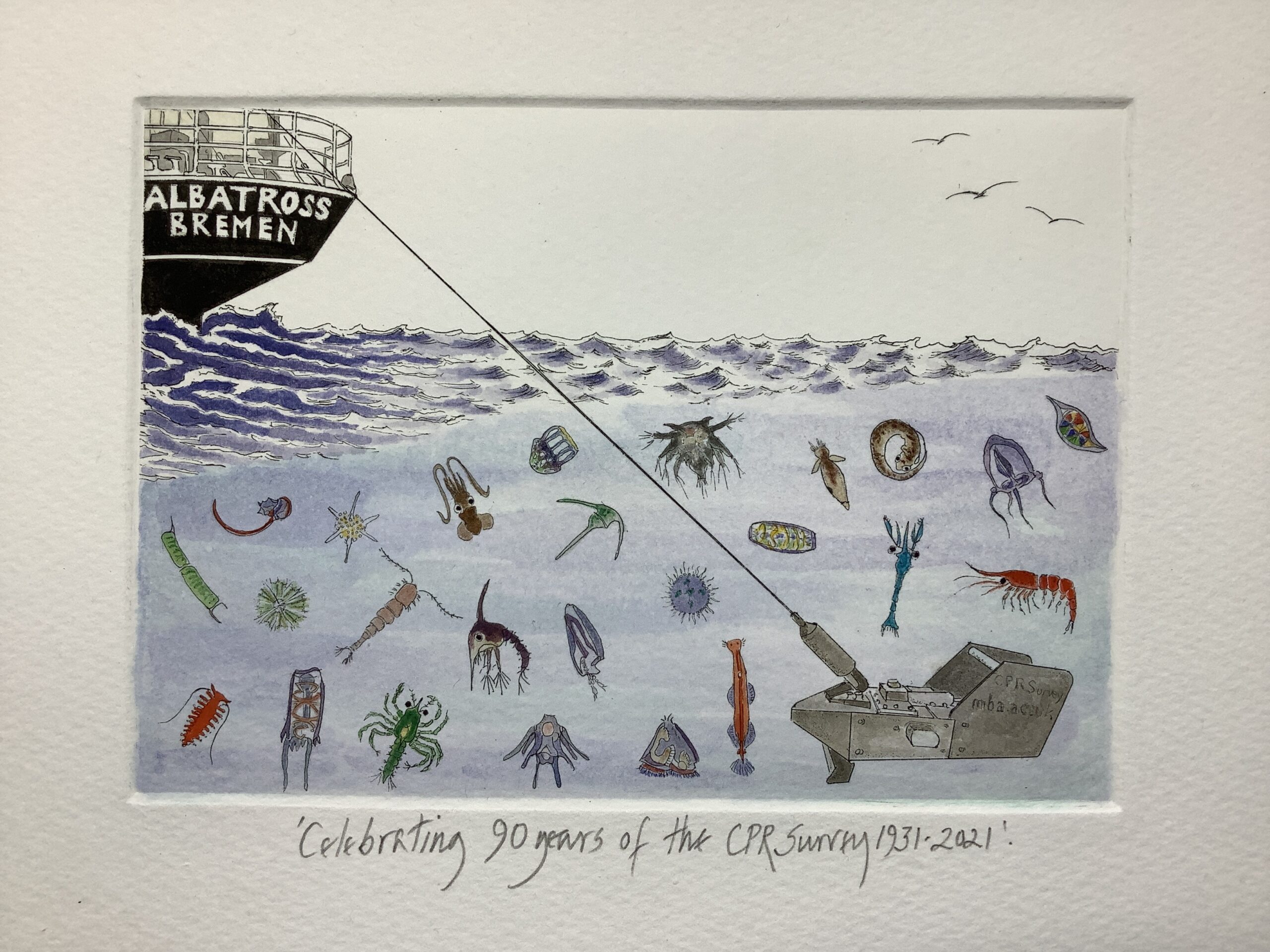
There are a few remaining prints of the original edition of 50 available to purchase. They are priced at £65 inc p&p please email me directly. The plate size is 162 x 116mm, the finished mounted size is 280 x 255mm.
Following the whole commission step by step was a great idea – the wonderful (and extremely talented and patient) photographer Rob Stillwell (who lives nearby so could drop in at each stage) photographed each part of the fairly long winded etching process.
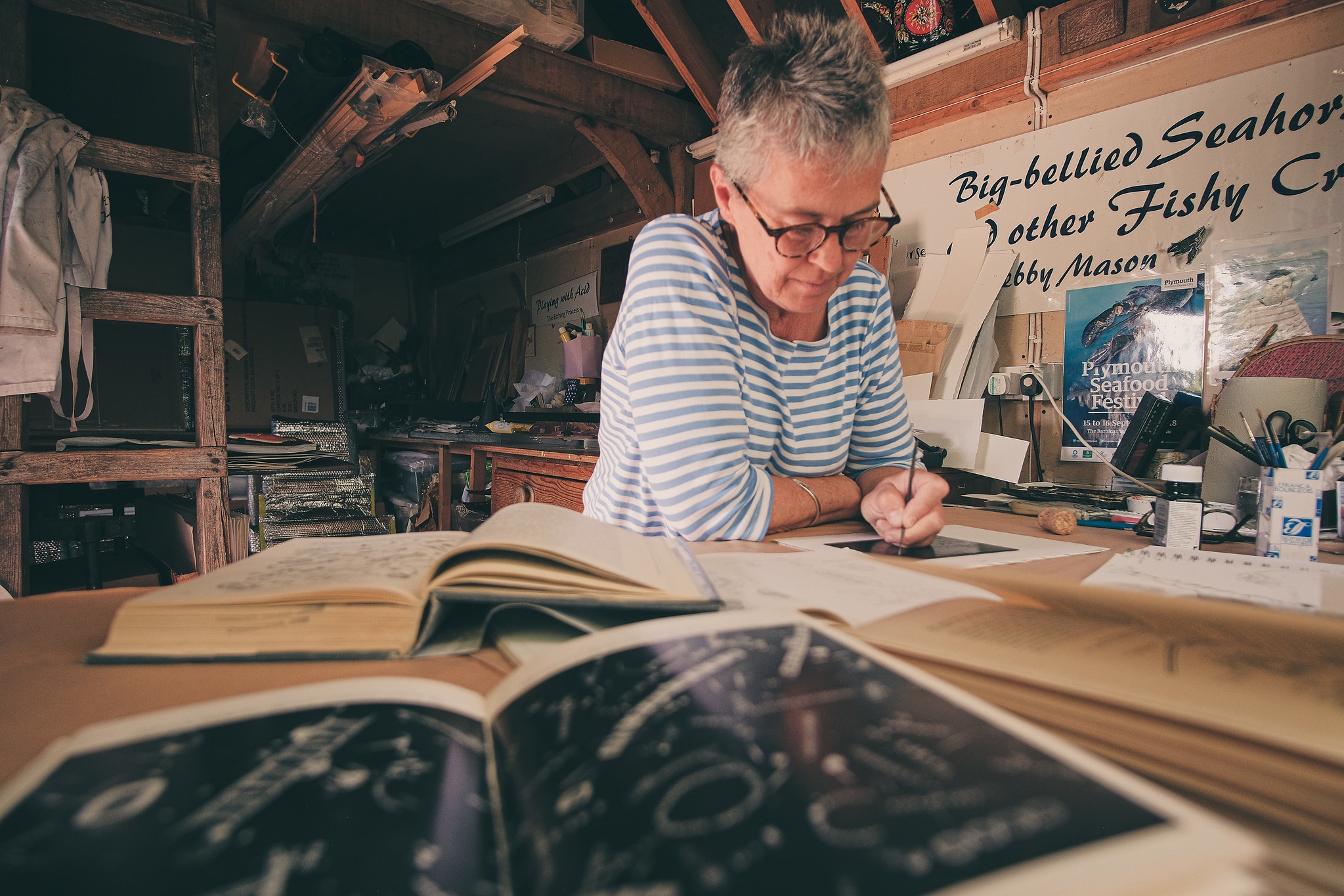
No responses yet